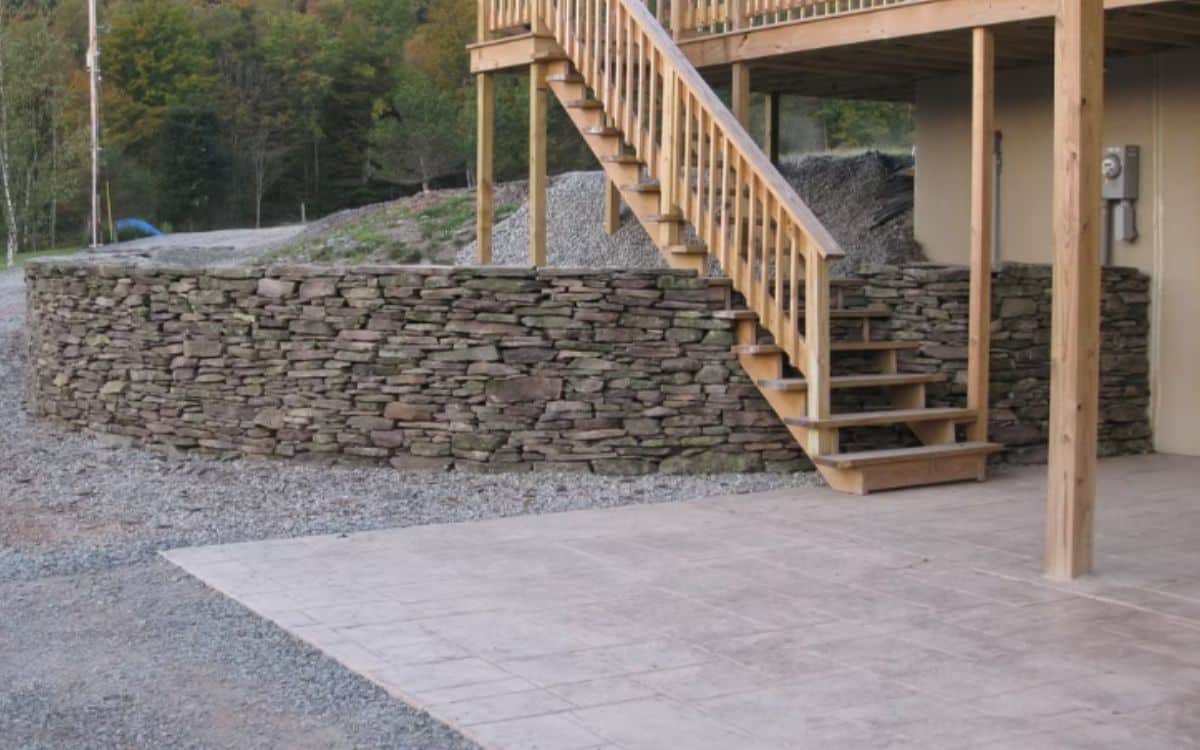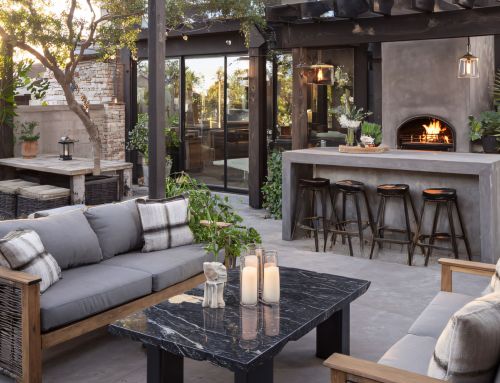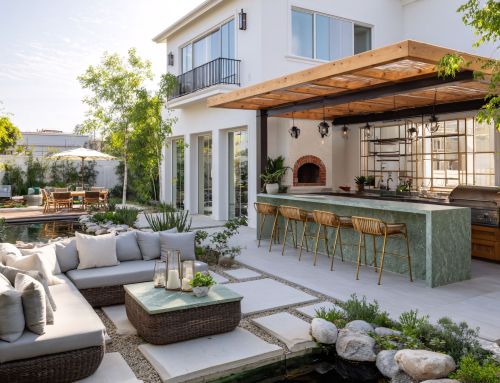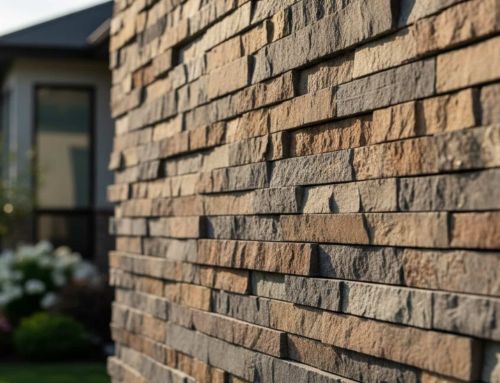Adding natural stone to your property instantly enhances its visual appeal and creates a timeless, durable finish that elevates both indoor and outdoor spaces. Whether you’re designing a sophisticated fireplace surround, a bold accent wall, or planning a full exterior upgrade, knowing the difference between wallstone and building veneer is essential to choosing the right material for your project.
Stone has been a trusted building material for centuries for good reason. Today’s homeowners can choose from a wide range of options, from rugged quarried fieldstone that captures natural charm to precision-cut veneers that offer sleek, modern consistency. The right choice depends on your design goals, installation needs, and personal style.
Key Takeaways
- Wallstone offers authentic quarried beauty for vertical stacking applications, while building veneer provides consistent manufactured elegance suitable for both interior and exterior projects
- Professional installation ensures proper mortar application, grout techniques, and structural integrity, especially important for complex projects involving corners, sills, and electrical integration
- Both wallstone and building veneer deliver exceptional durability and maintenance benefits when properly installed, with natural stone offering unique texture and color variations that enhance any space
Understanding Wallstone vs Building Veneer
What is Wallstone?
Wallstone is quarried or fieldstone material in its natural state, designed specifically for vertical stacking purposes. This real stone comes directly from nature, offering authentic texture and color variations that make each piece unique. The material is suitable for creating garden walls, retaining structures, and landscape features that blend seamlessly with outdoor environments.
The beauty of wallstone lies in its natural imperfections and organic shapes. Each piece tells a story of geological formation, creating depth and character that manufactured materials simply cannot replicate. When you choose wallstone, you’re selecting a material that has been tested by time and weather for thousands of years.
What is Building Veneer?
Building veneer, also known as stone veneer or stone cladding, consists of thin stone pieces designed to cover existing surfaces. This material creates the look of solid stone construction while being much lighter and easier to install. Building veneer works perfectly for both interior accent walls and exterior applications.
The whole process of manufacturing building veneer involves cutting natural stone into uniform thicknesses, typically ranging from 1 to 3 inches. This consistency makes installation more predictable and allows for better planning of your project timeline and material needs.
Types of Stone Materials
Natural Stone Options
- Fieldstone: Gathered from fields and natural deposits, fieldstone offers rustic charm with irregular shapes and earthy colors. This material works exceptionally well for outdoor projects where you want to create a connection with nature.
- Quarried Stone: Cut from specific quarry locations, quarried stone provides more uniform sizing while maintaining natural beauty. Popular types include limestone, granite, slate, and sandstone, each offering unique characteristics for different applications.
- Manufactured Stone Veneer: Created from natural stone materials but processed for consistency, manufactured veneer delivers reliable quality and easier installation. The manufacturing process ensures each piece meets specific standards for thickness, color, and texture.
Popular Finishes and Textures
Different finishes can dramatically change the appearance and feel of your stone installation:
- Natural Top Finish: Maintains the stone’s original surface texture
- Flamed Finish: Creates a rough, textured surface through heat treatment
- Antique Finish: Provides an aged, weathered appearance
- Sandblasted Finish: Delivers a uniform, matte texture
Installation: Professional vs DIY
Why Choose Professional Installation
Professional masons bring years of knowledge and experience to your project. They understand the complete system needed for proper stone installation, including the full bed preparation, mortar mixing, and grout application. When dealing with corners, sills, and complex surfaces, professional expertise becomes invaluable.
The installation process involves multiple steps that require precision and skill. From preparing the surface to achieving perfect alignment, professionals can deliver results that will last for decades without developing cracks or other issues.
DIY Considerations
While some homeowners attempt DIY installation, several factors make professional installation the better choice:
- Specialized Tools: Proper cutting and shaping require specific equipment
- Safety Concerns: Working with heavy stone pieces and power tools creates risks
- Structural Knowledge: Understanding load-bearing requirements and proper support systems
- Time Investment: Professional teams complete projects much faster
Applications and Design Ideas
Exterior Applications
Stone veneer transforms exterior spaces by adding elegance and durability. Popular applications include:
- Accent Walls: Create focal points that enhance curb appeal
- Fireplace Surrounds: Add warmth and sophistication to outdoor living areas
- Columns and Pillars: Provide structural beauty and support
- Garden Walls: Define spaces while maintaining natural aesthetics
Interior Applications
Indoor stone applications bring the beauty of nature inside your home:
- Feature Walls: Create stunning backdrops in living rooms or bedrooms
- Fireplace Surrounds: Add timeless elegance to your hearth
- Kitchen Backsplashes: Combine functionality with natural beauty
- Accent Pieces: Highlight architectural features and create visual interest
Installation Tips for Success
Surface Preparation
Proper preparation is crucial for long-lasting results. The surface must be clean, level, and structurally sound. Any loose material should be removed, and holes or imperfections should be filled before beginning the stone installation.
Mortar and Grout Application
Using the right mortar ensures strong adhesion between the stone and the wall. Apply mortar evenly to create a full bed of support for each piece. Grout should be applied carefully to avoid smearing on the stone surface while ensuring complete coverage of joints.
Working with Corners and Edges
Corners require special attention during installation. Professional masons often use corner pieces specifically cut for these applications. Proper planning ensures that corners look natural and maintain structural integrity.
Maintenance and Care
Regular Maintenance
Stone veneer requires minimal maintenance when properly installed. Regular cleaning with mild soap and water removes dirt and debris. Inspect grout lines annually and repair any cracks promptly to prevent water infiltration.
Seasonal Considerations
In Massachusetts, seasonal weather changes can affect stone installations. Proper sealing protects against freeze-thaw cycles, while regular inspection helps identify potential issues before they become major problems.
Long-term Durability
Quality stone veneer installations can last 50 years or more with proper care. The initial investment pays dividends through decades of beauty and performance, making it an excellent choice for both residential and commercial projects.
Choosing the Right Stone for Your Project
Climate Considerations
Massachusetts weather requires stone materials that can withstand freeze-thaw cycles, moisture, and temperature variations. Choose stone types known for their durability in New England climates. Proper sealing and professional installation can further protect your stonework from seasonal damage.
Style Matching
Consider your home’s architectural style when selecting stone. Traditional homes often benefit from classic fieldstone, while contemporary designs might call for sleek, uniform veneer pieces. The right stone can complement your exterior design and elevate curb appeal.
Budget Planning
Factor in both material costs and installation expenses. While natural stone requires a higher initial investment, its longevity and beauty provide excellent long-term value. Veneer options may offer more flexibility for cost-conscious projects without sacrificing style.
Conclusion
Choosing between wallstone and building veneer comes down to your project goals, budget, and design preferences. Both materials offer timeless appeal, structural integrity, and long-term performance when properly selected and installed. By understanding the differences in material type, application, and maintenance needs, Massachusetts homeowners and contractors can confidently invest in a stone solution that enhances curb appeal and adds lasting value to any space.
At Old Station Outdoor & Landscape Supply, we carry a wide selection of high-quality wallstone and building veneer products ideal for New England homes. Our knowledgeable team is here to help you find the right material, finish, and style for your next project. Whether you’re a homeowner or a contractor, visit our Norton, MA, showroom or contact us today to get expert advice and dependable service from a local supplier you can trust.
FAQs
What is a building veneer?
Building veneer is a thin layer of stone material (typically 1-3 inches thick) that’s applied to existing walls to create the appearance of solid stone construction while being much lighter and more cost-effective.
What is the difference between stone veneer and real stone?
Stone veneer is a thin covering applied over existing surfaces, while real stone refers to full-thickness stone blocks used for structural construction. Veneer provides the same visual appeal as real stone but is lighter, easier to install, and more affordable.
How much does it cost to stone veneer a wall?
Stone veneer installation typically costs between $30-70 per square foot, including materials and labor, depending on the stone type, project complexity, and regional labor rates. Natural stone veneer generally costs more than manufactured options.
What is stone veneer made of?
Stone veneer is made from either natural stone (cut into thin slabs from quarried materials like granite, limestone, or fieldstone) or manufactured stone (created from cement, aggregates, and iron oxides to mimic natural stone appearance).










